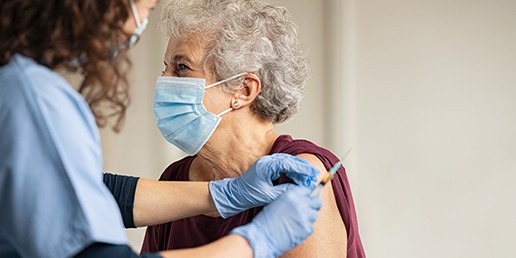Serious symptoms and safety netting
Spotting Sepsis
Some links on this page have been colour coded to make it easier to find the information you need:
HOW COMMON IS SEPSIS?
Sepsis is not common, 40 to 100 per 100,000 population [Gotts, 2016] (Prevalence | Background information | Sepsis | CKS | NICE), however it is very serious resulting in many hospital admissions. Many infections can develop into sepsis however the vast majority of infections are self-limiting and will not.
WHAT SYMPTOMS SHOULD MAKE you CONSIDER SEPSIS?
Having some basic knowledge of the symptoms and signs of sepsis can allow you to identify when someone is becoming seriously ill. You are likely to never see someone with sepsis but knowing the simple symptoms and signs can allow prompt action which can significantly improve outcomes.
CALL 999 AND ATTEND A&E IF A BABY, CHILD OR ADULT HAS EVIDENCE OF SEPSIS
Remember you can always call 111 if you are unsure whether you should attend A&E rather than attend your GP practice.
The information below starts with simple information from the NHS and the Sepsis Trust and that should be sufficient. However, if you want more detail (Patient info) or clinical level information (NICE) that is also provided.
From the NHS
- Symptoms of sepsis and what to do Symptoms of sepsis – NHS
- Sepsis Sepsis | NHS inform
- Is your baby or toddler seriously ill? Is your baby or toddler seriously ill? – NHS
From the Sepsis Trust
- How to spot sepsis in adults and children (simple points) About Sepsis – Sepsis Trust
- Some good leaflets Resources – Sepsis Trust which you can download particularly: “Spotting sepsis in children” (a good check list) and “Sepsis a guide for patients and relatives” which gives general information on sepsis.
From Patient info
- Sepsis Sepsis (Septicaemia) | Symptoms and Treatment | Patient
- Sepsis warning signs you need to know The warning signs of sepsis | Sepsis symptoms | Patient
- Child sepsis safety net Child Sepsis Safety Net | Patient
- Adult sepsis safety net Adult Sepsis Safety Net | Patient
From the Royal College of General Practitioners
A sepsis tool kit (intended for GP practices but includes some good patients and carers resources) Sepsis Toolkit
Further information including easy read leaflets on sepsis:
From NHS England
Easy read information: Sepsis NHS England » Easy read information: Sepsis
From NICE
- Identifying people with suspected sepsis Recommendations | Sepsis: recognition, diagnosis and early management | Guidance | NICE
- Sepsis Sepsis | Health topics A to Z | CKS | NICE
- Scenario: Feverish children – risk assessment ( includes the NICE traffic light system : Red (high risk of serious illness)) Scenario: Feverish children – risk assessment | Management | Feverish children – risk assessment and management | CKS | NICE
A simple approach to help identify sepsis and other serious illness in a child
Rather than just a focus on sepsis, one can review all the symptoms a child has and see if any of these symptoms could indicate a serious illness. This will cover many causes of serious illness not just sepsis but ensures that you know when your child should attend A&E immediately.
The traffic light system (with red, orange and green coloured tables) is used for identifying risk of serious illness with common presentations such as fever (high temperature), rashes, headaches, vomiting and diarrhoea and more. The red table for each presentation includes features that would suggest urgent help is needed at a hospital emergency (A&E) department.
From Healthier Together – What 0 to 18
provides excellent simple information including the traffic light system covering the ages 0 to 18. Scroll down each page to find the traffic light system information.
- Concerned about your baby aged less than 3 months? Concerned about your baby aged less than 3 months? :: Healthier Together
- Worried now about your child (aged 3 months and over)? Worried now about your child (aged 3 months and over)? :: Healthier Together
FREQUENTY ASKED QUESTIONS
Safety Netting
It is likely you have been sign posted to information on spotting sepsis, as part of a process called “safety netting.” This is explained in detail under
In summary:
“Safety-netting advice is information shared with a patient or their carer designed to help them identify the need to seek further medical help if their condition fails to improve, changes, or if they have concerns about their health.”
Peter Edwards et al. Published in British Journal of General Practice. November 2019.
The NHS suggests
“things you can do to help prevent infections that can lead to sepsis” which includes keeping up to date with vaccines.
Who can get it: see under “How to help prevent infections” Who can get sepsis – NHS
reducing the risk of sepsis with the Annual Flu vaccination
The flu vaccine is offered free on the NHS to anyone in a higher risk group including people with certain long-term health conditions. People with higher risk of more serious illness with flu including sepsis can benefit from a free flu vaccination.
The NHS explains this further
Flu vaccination Flu vaccine – NHS
Clinical checks and patient’s own assessments
A clinician will ask a number of questions and complete an examination. The examination is likely to involve a physiological assessment which may include:
- pulse
- temperature
- blood pressure
- respiratory rate
- oxygen saturations
- confusion status
A raised respiratory rate, low blood pressure and new onset confusion offer a higher predictive value than the other measures for possible sepsis.
Hospitals measure deterioration and triage patients based on these 6 measurements in a tool called NEWS2. NHS England » National Early Warning Score (NEWS)
Pulse oximetry and monitoring vital signs outside the GP practice setting
More Care Home patients and patients in the community are been monitored for sepsis. The Care Quality Commission (CQC) covers in the article linked to below some of the details of what is requested when monitoring for sepsis is done outside a GP practice. Though intended for clinicians there are links to useful information including to what results are abnormal and how to take a pulse. This should not be relied on but can give you insights into what is looked for and maybe asked of you by a doctor to monitor for the potential risk of sepsis if you have an infection.
From the Care Quality Commission (CQC)
Pulse oximetry and monitoring vital signs outside the GP practice setting GP mythbuster 102: Pulse oximetry and monitoring vital signs outside the GP practice setting | Care Quality Commission
PATIENTS OWN ASSESSMENT without clinical involvement
Many patients now have a thermometer and oxygen saturation monitor and some have an electronic blood pressure monitor. Importantly it is worth understanding what your baseline readings are when you are well so you can more easily understand when there is a trend showing deterioration.
However, be aware that these readings cannot always be relied on and if you consider you or someone you are looking after has evidence of sepsis then call 999 do not just rely on readings.
An example of difficulties with the accuracy of measurements is given in the case of oxygen saturation monitors (article intended for clinicians) CAS-ViewAlert
Call NHS 111 if you are not sure what to do
If you are not sure whether you should call 999 (or go to A&E) or instead ask for an urgent GP appointment then 111 can advise you
As the NHS suggests
NHS 111 can help if you think you need medical help right now
Videos and podcasts
On the videos and podcasts page there are links to some relevant videos and podcasts covering the topic of spotting sepsis.
- Videos And Podcasts – see section “wellbeing and disease prevention”.




